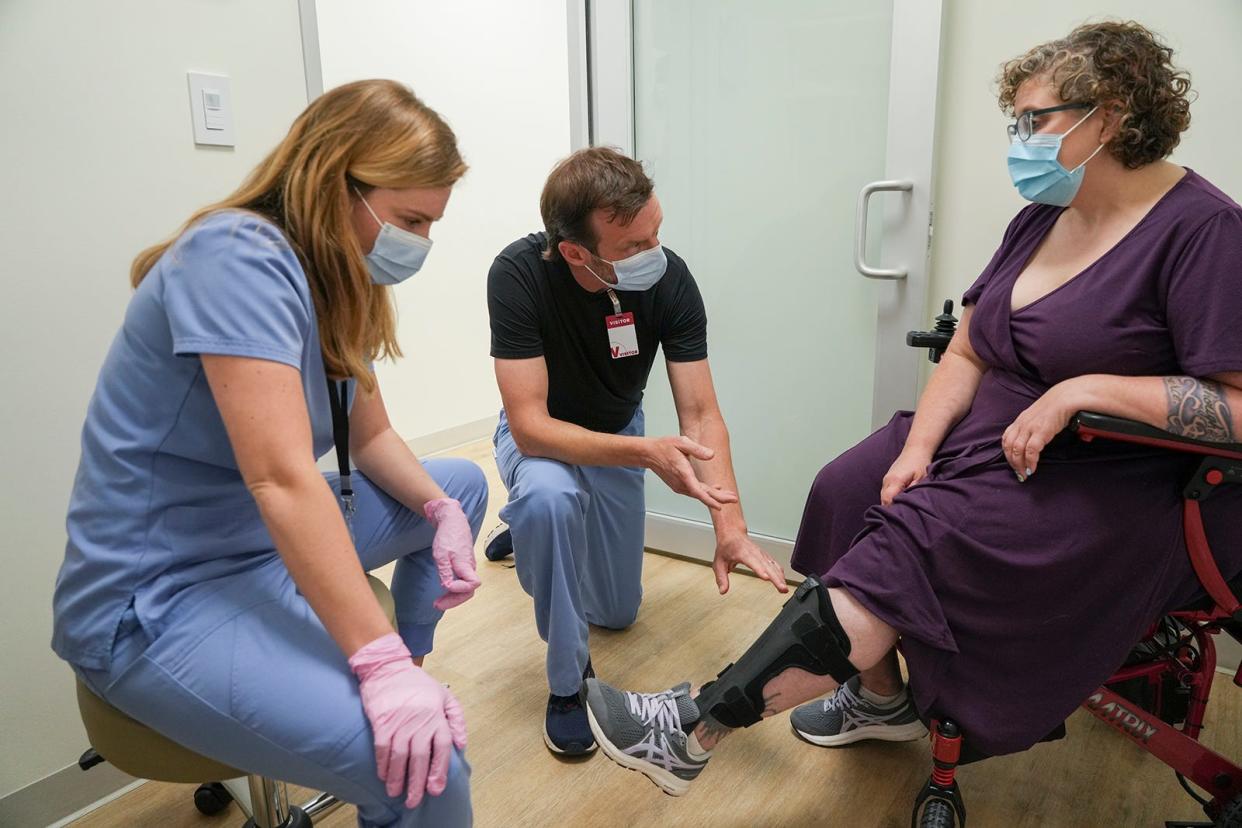UF student: Occupational therapists enable patients to regain daily living skills

April is Occupational Therapy Month, an important time to highlight the value and significance of the occupational therapy profession. Occupational therapists can work in many different settings, with individuals across the life span and with a range of diagnoses to enable and enhance an individual’s participation in meaningful activities.
Occupations are more than one’s profession. They play a central role within each person’s identity and consist of the daily activities that people do individually, within their family unit and in their community that gives their life purpose. Some examples of occupations that occupational therapists can work with individuals on are activities of daily living which include, toileting, bathing, personal hygiene, dressing and feeding, as well as health management, social participation and leisure activities.
JU professor: The role of the respiratory therapist grows in a post-COVID world
Race for the children: Families express what Wolfson hospital has meant to them
Letters: Pending legislation can help pets (and their humans) benefit from telemedicine
With pediatrics, occupational therapists can play a role in collaborating with caregivers in implementing interventions to improve mental health, encourage social participation and enhance learning in school. While the role of occupational therapy with older adults is broad, some examples could look like implementing interventions to prevent falls, promoting independence with activities of daily living, rehabilitating people with neurological conditions and managing chronic conditions.
More specifically, a 2012 article in the American Journal of Occupational Therapy describes the results of a systematic review where the findings of the research provide strong to moderate evidence that indicates occupational therapy interventions, such as constraint-induced movement therapy to enhance upper extremity function, cognitive rehabilitation to address apraxia and repetitive task practice were effective in improving occupational performance in stroke patients.
Within the United States health care system, there is a goal to achieve the triple aim. The triple aim focuses on improving the experience of care, improving the health of the population and reducing the cost per capita of health care. Occupational therapists can contribute to the triple aim through implementing interventions that are supported by evidence and providing services that are effective in producing desired outcomes while maintaining cost-effectiveness.
This month, take the time to consider the value that occupational therapy can bring to you or a loved one to improve your functional performance and increase your independence with activities you find meaningful.

Allison Chu, doctoral student in occupational therapy, University of Florida
This guest column is the opinion of the author and does not necessarily represent the views of the Times-Union. We welcome a diversity of opinions.
This article originally appeared on Florida Times-Union: Occupational therapy an effective treatment for range of conditions
